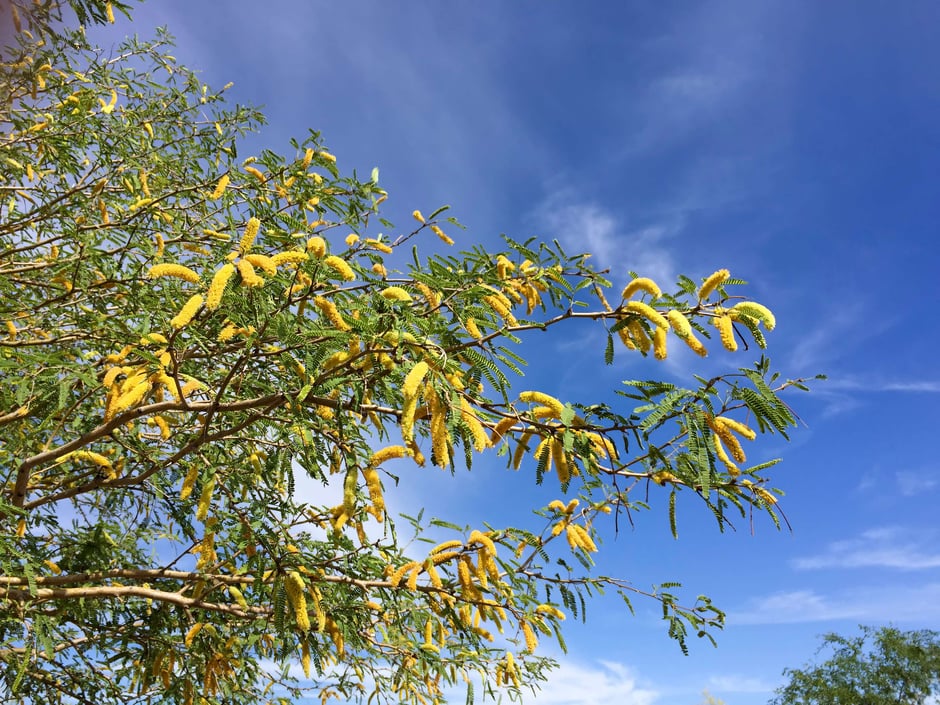Blog

Edible trees have been crucial to the diets of indigenous people for thousands of years. Many species of edible trees grow natively in Arizona, making them well-adapted to the low rainfall, high temperatures, and sunny weather this region is known for. Perhaps no other type of tree is more resilient against poor soil and drought than mesquite. Learn more about how indigenous people tap into this valuable resource and how it could become the crop of the future.
Uses for Mesquite Trees
This tree was once Arizona’s most important food source for indigenous people. Its seedpods, which are about 35% protein, have long been used to make everything from flour and no-bake bread to candy and syrup. It’s also a primary ingredient in a thick Mexican drink called atole and can even be brewed into tea and beer.
Foragers and young tribal people often chew on the pods, both to enjoy the taste and to garner nutritional benefits. The flavor varies—some pods are nutty, whiles others are akin to brown sugar.
Mesquite is useful in other ways as well. The foliage offers shade, the wood provides housing and fencing materials, the bark is fantastic for barbecue use, and the leaves serve various medicinal purposes.
Mesquite’s Low Water Requirements
Mesquite is ideally suited to Arizona’s climate, with roots that tunnel 160 feet deep, further than any other tree. This allows mesquite to tap into underground water reserves other plants can’t reach. As a result, generous yields are possible in places like Yuma, where it rains an average of three inches a year, even without irrigation.
The roots provide another hidden benefit. As a legume, mesquite fixes nitrogen, which improves soil fertility and virtually eliminates the need for fertilizer. This makes mesquite a great candidate for orchard-type crop production but without the need to amend the soil with nitrogen.
Is Mesquite the Crop of the Future?
Despite mesquite’s versatility, nutritional power, and drought resistance, it has been centuries since people widely considered it a viable food source. Early Southwestern ranchers even tried to eliminate mesquite trees through burning and cutting.
Luckily, ecologists have recently gained renewed interest in mesquite’s potential as a water-wise crop and food source in the Arizona desert and elsewhere across the region. Some even see it as a potential replacement for conventional crops in the Southwestern US because it embraces the dryland climate instead of trying to transform it. In a region that’s only getting hotter and drier as its population steadily grows, mesquite could regain its status as one of the most important resources in Arizona.
Moon Valley Nurseries proudly grows a thornless variety of Chilean mesquite ideal for your Arizona home. Planting a tree or two may not change the future of growing and harvesting crops in the Southwest, but it gives you a chance to enjoy mesquite’s many benefits for yourself. To learn more, please contact us today. You can also see our beautiful, mature mesquite trees in person at one of our Arizona locations.
Submit a Comment